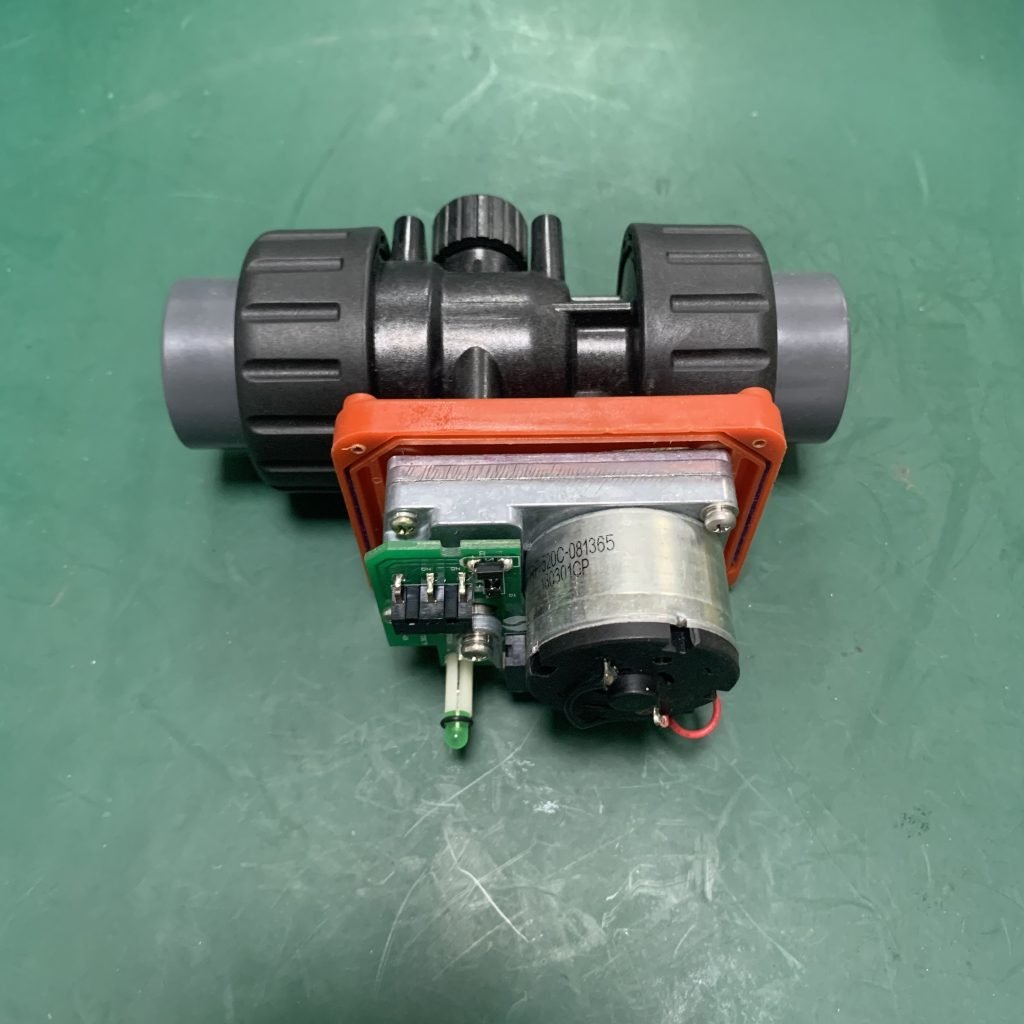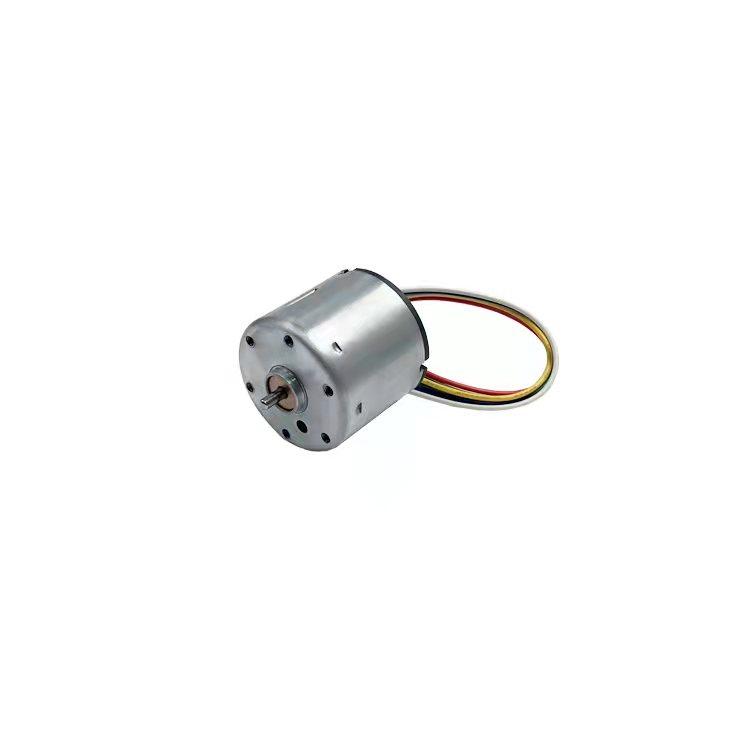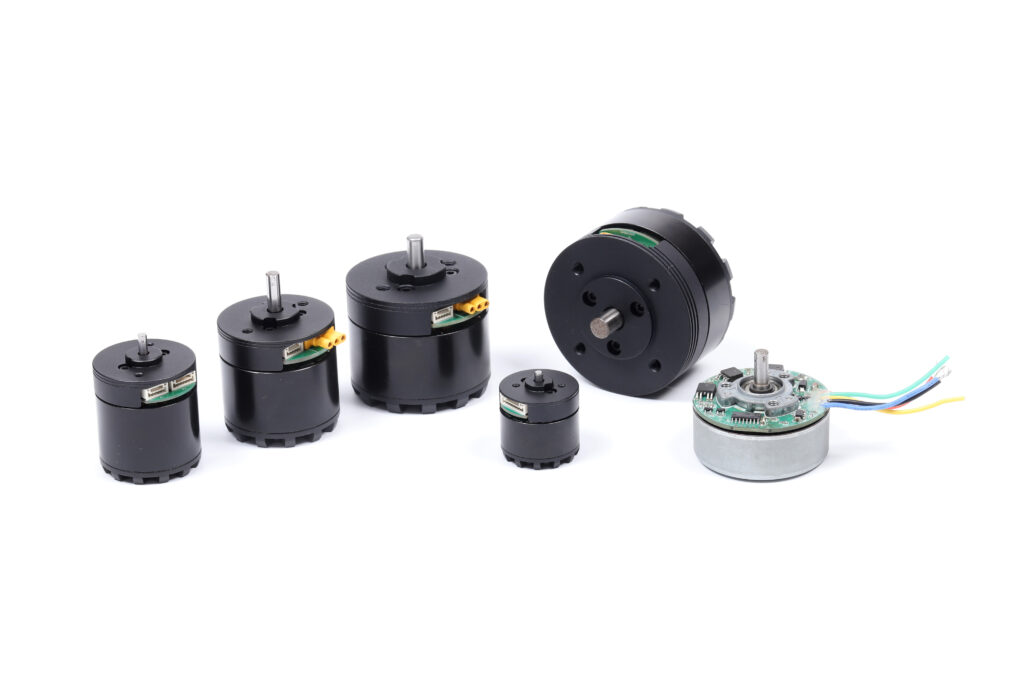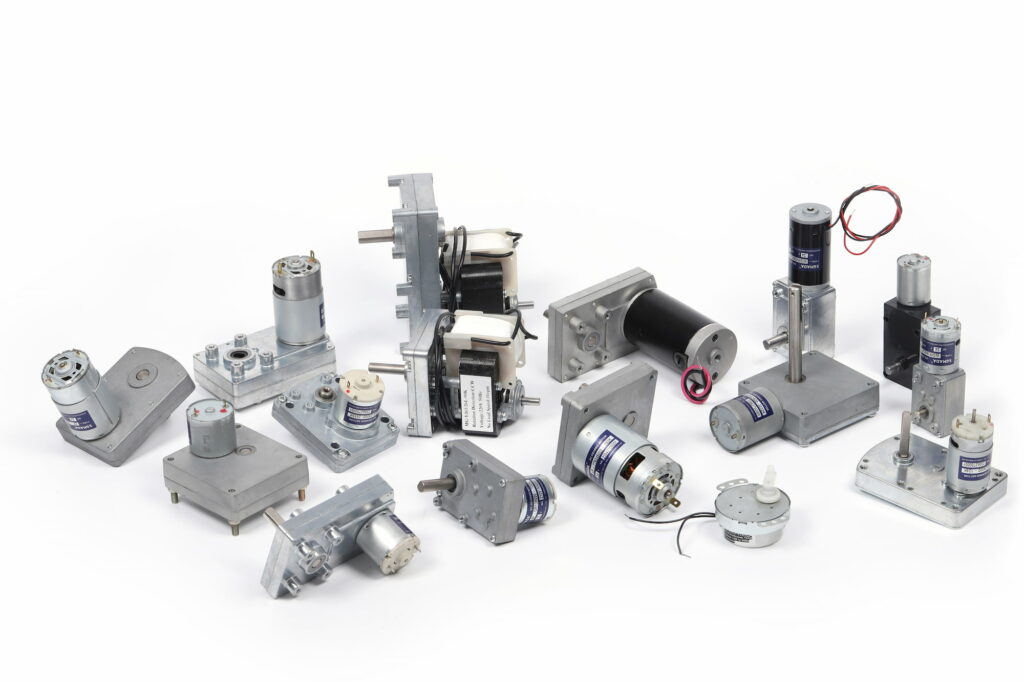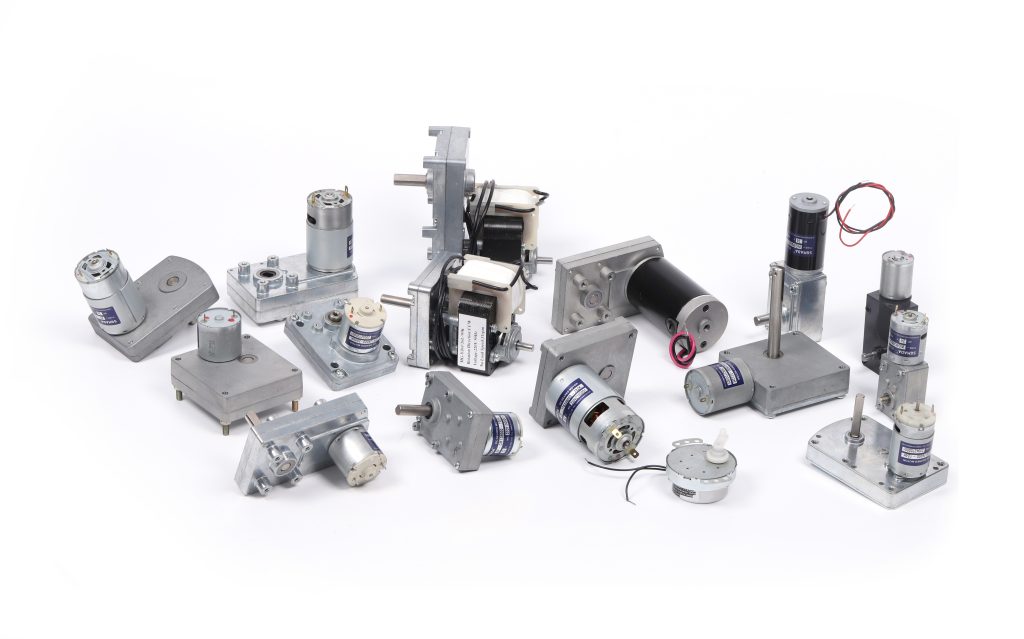I. Introduction
A. Introduction : How to Choose High Torque Gear Motor
This article aims to provide a comprehensive and practical guide to help engineers, academics and DIY enthusiasts understand the basic knowledge of micro geared motors, master their basic parameters such as voltage, current, speed, torque, power, volume and weight, and according to these factors to choose the suitable gear motor. The article will also cover different types of motors and gearboxes, analyze their respective advantages and disadvantages, and explore the key factors in selecting high-torque gear motors.
II. Basic Knowledge of Gear Motor
- A. What is a Gear Motor ?
- B. Gear Motor Working Principle
- C. What is the application of Gear Motor
A. What is a Gear Motor ?
A gear motor is a mechanical component that combines a gearbox with an electric motor. The electric motor converts externally input electrical energy into kinetic energy. This kinetic energy is then regulated by an internal gear reduction mechanism within the gearbox, reducing the motor’s output speed while increasing its torque.
B. Gear Motor Working Principle
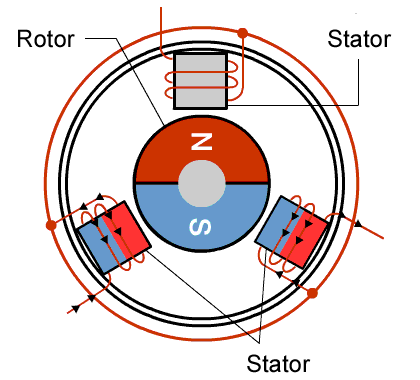
Motor : The working principle of the motor is to convert the input electrical energy into mechanical energy. Electric current passes through a winding, usually a coil of copper wire, creating a magnetic field. This magnetic field interacts with one or more magnets inside the motor, causing the motor to rotate. Generally, the output end of the motor is output through the motor shaft. The converted mechanical energy can be expressed in the torque and rotational speed output by the output shaft.
Gearbox : The working principle of the gearbox is based on the working principle of gear transmission. Through gear transmission reduction, the speed of the motor output shaft is reduced and the torque is increased. According to the type of gear transmission, gearboxes can be divided into spur gearboxes, planetary gearboxes, worm gearboxes, harmonic gearboxes, etc. The main function of the gearbox is to reduce the speed, increase the torque and change the output direction.
C. What is the Application of Gear Motor
Gear motors are widely used in some mechanical transmission fields due to their high torque and low speed working characteristics.
DONCEN Cooperation Case
The above cases are just the customized micro gear motors developed in cooperation with DONCEN MOTOR. Geared motors can be widely used in the field of automated transmission and not just in the above applications. If you have the need to design or develop a micro gear motor, DONCEN’s engineering team will be at your service 24/7. Our work philosophy is to provide valuable services to our customers.
III. Basic Parameters of Gear Motor ( What you need to know in choosing a gear motor )
- A. Voltage
- B. Current
- C. Speed
- D. Torque
- E. Power
- F. Size (Volume)
- G. Weight
A. Motor’s Voltage
Motor voltage is the pressure from the power source that pushes a current through a circuit (Emotor Direct). The voltage of the motor usually refers to the power supply voltage required for the normal operation of the motor.
The voltage of the motor is an important parameter when selecting a gear motor. Motor voltage directly determines the output power of the motor.
P=U*I For the same motor, the higher the voltage input, the power output greater.
Within the battery capacity range, we usually recommend using a high voltage motor. A 24V motor is about 4 times more powerful than a 12V motor.
12V or 24V DC Motor ? Exploring the Impact of Voltage on Motor Performance? →
B. Motor’s Current
The current in a motor is present in the coils. The motor converts electrical energy into mechanical energy through the electromagnetic effect generated by current cutting magnetic field lines.

I = U / R :The current of the motor is directly related to the voltage. The greater the voltage, the greater the current of the motor
I = T / Kt : (T = Torque of motor / Kt is the Motor torque constant. ) Attendtion!! When the motor current is less than the rated current, the current is proportional to the torque. When the current exceeds the rated current and the core is magnetically saturated, if the current increases again, the torque will not increase.
P = I² * R : The current is directly related to the power loss of the motor. The heating power of the motor increases as the current increases. The higher the current, the higher the temperature inside the motor and the lower the efficiency of the motor.
C. Motor’s Speed
The output speed of the geared motor is determined by the rated speed of the motor and the gear ratio of the gearbox.
Rated Speed:The rated speed of a motor is the maximum speed recommended by the manufacturer for long-term continuous operation of the motor under specific working conditions, usually at rated voltage and rated load. For example, A motor with a no-load speed of 6000 rpm has a rated speed of approximately 5500 rpm.
Gear Ratio:The gear ratio(transmission ratio) is the ratio of the input shaft speed to the output shaft speed. Mathematically, the gear ratio N is usually defined as:
N=Input Shaft Speed (RPM)/Output Shaft Speed (RPM)
For instance, if the input shaft speed is 6000 RPM and the output shaft speed is 600 RPM, the reduction ratio would be 1: 10.
However, there will also be a certain amount of energy loss in gear transmission, which means that the final output speed of the motor also needs to consider the working efficiency of the gearbox.
N (output) = Motor Rated Speed * Gear Ratio * Gearbox Effiency
Motor Speed – How to Calculate the Gear Motor Rpm→
D. Torque
The torque of the motor is the physical quantity of the rotational force of the motor output shaft, usually measured in Newton meters (N·m).

Torque (N.m) = 9.5488 x Power (kW) / Speed (RPM)
Motor torque is directly determined by output power and motor speed. The higher the output power of the motor, the lower the speed of the motor, and the greater the output torque of the motor.
Example : Based on Figure 1 We assume that the motor runs at a constant speed and the torque of the motor is T =mg*r
T= 0.025×9.8×0.002= 0.00049 Nm. Then if the shaft is spinning at 1000 rpm, Power= 0.49W
Motor Torque: Definition, How to Calculate Motor Torque and Torque Applications →
E. Power
The power of a motor is a physical quantity that describes the motor’s ability to complete work or convert energy per unit time. The power of a motor is usually measured in watts (W) or kilowatts (kW)
In the selection of motors, DONCEN believes that we should pay attention to two Powers. P1 (Input power) and P2 (output power).
P1 = U * I U is voltage of power / I is the current
P2 = T * w T is the torque / w is the speed
F. Size
Motor Size:Engineers consider motor size based on the size of the installation space for the motor in the application area. In general, the size of the motor is directly proportional to the power of the motor.
Gearbox Size:The volume and shape of the gearbox are related to the number of gears contained inside and the gear reduction structure. The parallel shaft reduction structure gearbox (spur gearbox) can be made flat. The planetary gearbox can achieve high space utilization. Engineers have to choose the gearbox structure based on application’s requirements.
G. Weight
The overall weight of the Gear motor is also one of the important considerations in motor selection. For example, in robot joints, engineers have strict requirements on the weight of the motor.
IV. Types and Characteristics of Gear Motor
A. Motor Type
The motor is the core component of the geared motor. Choosing the right motor is important for your application. As the world’s leading manufacturer of gear motors, we provide high-quality DC motors / AC motors / BLDC Motors and outrunner BLDC motors. You can choose the right type of motor for your application based on our analysis below.
1.DC Brush Motor
A brushed DC motor is a motor that uses brushes and a commutator to convert electrical energy into mechanical energy. DC brush motors have simple structural design, stable control and low production cost. It is the most commonly used, longest-developed, and most cost-effective choice in the field of micro transmission on the market. DONCEN MOTOR provides hundreds of standardized DC brush motors, and we can also provide customized services for DC brush motors.
Learn more DC Brsuhed motor from “What is a DC Brush Motor”
2.BLDC Motor
A brushless DC motor (Brushless DC motor) is a motor that uses a brushless converter to achieve synchronous rotation between the rotor magnetic field and the stator magnetic field. Compared with the traditional brushed DC motor, the BLDC motor controls the rotation of the rotor through an electronic controller, thereby avoiding the mechanical loss caused by brush friction and the electromagnetic interference caused by electric sparks, and has higher efficiency and longer life.
3.AC Motor
AC motor is an electric motor that uses alternating current as a power source. According to the structure and working principle of the motor, AC motors can be divided into asynchronous motors and synchronous motors. Compared with DC brushed motor. AC motors have a longer life and work more efficiently. Therefore, in some household appliances or industrial fields, AC motors may be a more suitable choice.
4.Outrunner BLDC Motor
Outrunner brushless motor is a type of brushless DC electric motor. T stator is mounted on the outside of the rotor. This configuration allows for a more efficient use of space, and results in a higher power-to-weight ratio than other brushless motor designs. Compare with the inrunner bldc motors, outrunner bldc motors are lighter in weight, higher in power and huger in torque. Outrunner brushless motors are typically used in applications where high power and/or speed are required.
B.Gearbox Type
The gearbox is another core component of the geared motor. Gearboxes are divided into spur gearboxes/planetary gearboxes/worm gearboxes/harmonic gearboxes according to different gear reduction structures. Different types of gearboxes have different types of advantages and disadvantages. In the following sections we will analyze the advantages and disadvantages of different types of gearboxes and tell you how to choose the right gearbox.
1. Spur Gearbox
Spur gear structures usually use parallel-axis gears, and the tooth surfaces of the gears are parallel to the axis. Through the mutual meshing between gears, the speed of mechanical movement is reduced and the torque is increased.
Spur gearboxes in geared motors generally use duplex gears (Figure 1). Duplex gears (also called double-layer gears) are a special type of gear structure, usually consisting of two independent but side-by-side gear circles. share a common axis or are closely connected. In mechanical motion, through the interaction between the large gear and the small gear, the speed transmitted by the large gear is reduced and the torque is increased. At the same time, the small gear in the double gear will transmit mechanical energy to the large gear on the vertical axis. Then the large gear interacts with the small gear in the other double teeth to achieve the effect of step-by-step deceleration.
Spur Gearbox Advantages:
- Simple design
- Low production cost
- High gear ratio
- Flexible size design
Spur Gearbox Disadvantages:
- Low transmission efficiency
- Low space utilization
- noise
- vibration
2. Planetary Gearbox
The internal structure of the planetary gearbox consists of a planetary gear system. A planetary gear is a planetary gear system consisting of gears and ring gears. In a planetary gear system, the sun gear acts as the input in the planetary gear system. Three or more planetary gears rotate around the sun gear within the system. Finally, the planet gears mesh with the annular ring gear from the inside, creating an internal spur gear design (Planetary gear system).
- Sun Gear: The gear located in the center of the gearbox.
- Planet Gears: A set of gears that rotate around the sun gear.
- Planet Carrier: used to support and connect all planetary gears.
- Ring Gear: An internally toothed ring gear in which the planetary gears operate.
Planetary Gearbox Advantages:
- High transmission efficiency
- High space utilization
- High Torque
- High gear ratio
Planetary Gearbox Disadvantages:
- High Cost
- High accuracy requirements
- Repair Hard
3. Worm Gearbox
The internal gear structure of worm gearbox is mainly composed of worm turbine and worm gear. Mechanical energy is transmitted through the interaction of the turbine and worm. The characteristic of the worm gear structure is to change the output direction. Because of the special structure of the turbine reduction gearbox, the output direction and input direction of the worm gearbox can be changed by 90°.
- Worm turbine: Shaft with one or several helical teeth
- Worm gear: Spur gear, mated with helical teeth on a worm turbine
Worm Gearbox Advantages:
- Low noise
- Self-locking
- Direction change
Worm Gearbox Disadvantages:
- Low effiency
- Wear quickly
- Directional restrictions
4. Harmonic Gearbox
Harmonic gear units use a unique operating principle based on the elastic mechanics of metals. Compared with other gear reduction types, the biggest advantages of harmonic strain wave gear are zero backlash characteristics and saving weight and space. Harmonic gearbox is composed of only three basic components. They are: wave generator, flexible spline and circular spline.
- Wave Generator: A rubber cylinder or metal core with high-pressure gas or liquid used to drive external gears.
- Flexspline: A thin-walled, flexible circular gear with a few external teeth. It is deformed by the wave generator to contact the rigid internal gear.
- Rigid internal circular gear (Circular Spline): A fixed circular gear with more external teeth. The number of external teeth is usually 2 or 3 more than that of flexible external gears.
Harmonic Gearbox Advantages:
- Zero backlash
- High effiency
- Small Size
- High precision
Harmonic Gearbox Disadvantages:
- High Cost
- Prodcution

V. Key Factors for Selecting High-Torque Gear Motors
1. Application
It is very important to choose the right geared motor according to the application. As an industrial product, the selection of geared motors needs to consider batch costs. To give a simple example, high-priced outrunner bldc motors are suitable for high value-added robot projects. But it cannot be applied to some low-cost household appliances. When selecting a geared motor, you first need to confirm which fields your application is in. You can choose the appropriate motor type and gearbox type according to the application.
2. Working Environment
The impact of environmental factors on motor operation is mainly reflected in performance and life. Engineers need to choose different types of reduction motors for some special environmental factors. The following are some special environmental factors:
- High temperature: High temperature environment may cause overheating inside the motor, reduce the life of the insulation material, and may cause the motor efficiency to decrease.
- Low Temperature: Low temperature may affect the performance of the lubricant and thus the operation of the gearbox.
- High humidity: May cause the insulation materials inside the motor to degrade or corrode, increasing the risk of short circuits.
- Low Humidity: Low humidity may generate static electricity, which may affect the motor’s electronic control system.
- Corrosion and chemical exposure: In environments that are highly corrosive or have a risk of chemical exposure, motors may need to be selected with special coatings or materials to provide additional protection.
- Dust and pollution:In environments with high vibration or shock, motors require additional mechanical stability and durability.
Therefore, understanding the working environment of the geared motor and selecting based on these factors can not only ensure the reliability and efficiency of the motor, but also avoid additional costs and potential safety risks caused by improper selection.
VI. Conclusion and Recommendations
The two core points in selecting a geared motor are to choose the appropriate combination of motor and gearbox. We recommend that engineers choose a professional gear motor manufactures. In this way, the reduction motor manufacturer can customize the reduction motor for you according to your needs to enhance the competitiveness of the product.
VIII. Appendices
FAQ
-
What are the advantage of gear motor ?
Geared motors are work for low speed and high torque fields. The cooperation between the gearbox and the motor allows the output end of the motor to operate efficiently at a high-torque operating point.
-
What are the types of gears in gearboxes?
Generally we use spur gears, helical gears, worm gears and a small amount of bevel gears
-
What type of lubricant should be added to the gearbox?
The selection of lubricating oil needs to be determined based on the structural design of the gearbox and the working conditions of the motor.
-
What is the effiency of Geared Motor ?
The working efficiency of the gear motor is determined by the working efficiency of the motor and the reduction efficiency of the gearbox.
-
What are the gear ratios of gearboxes ?
The gear ratio of the gearbox is determined by the internal gear structure. Our standard reduction ratio range is 1:1 – 1: 5000, which can be customized according to your needs









